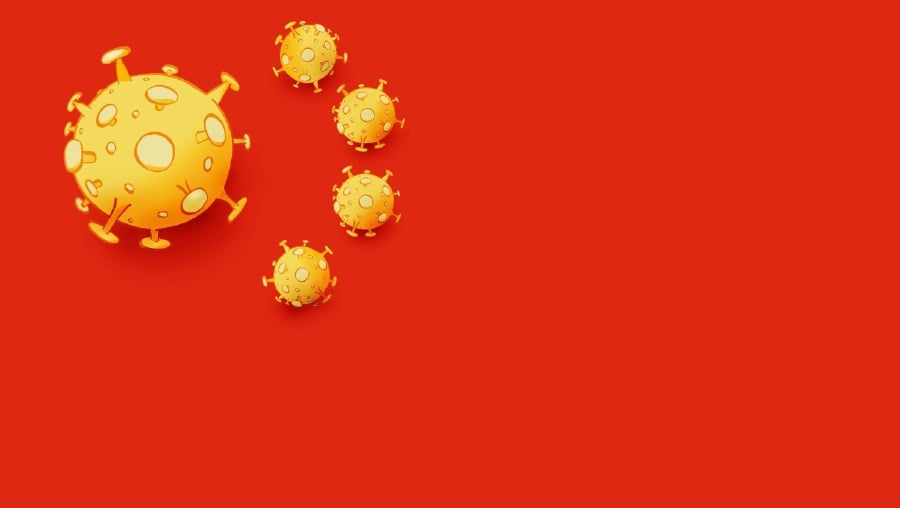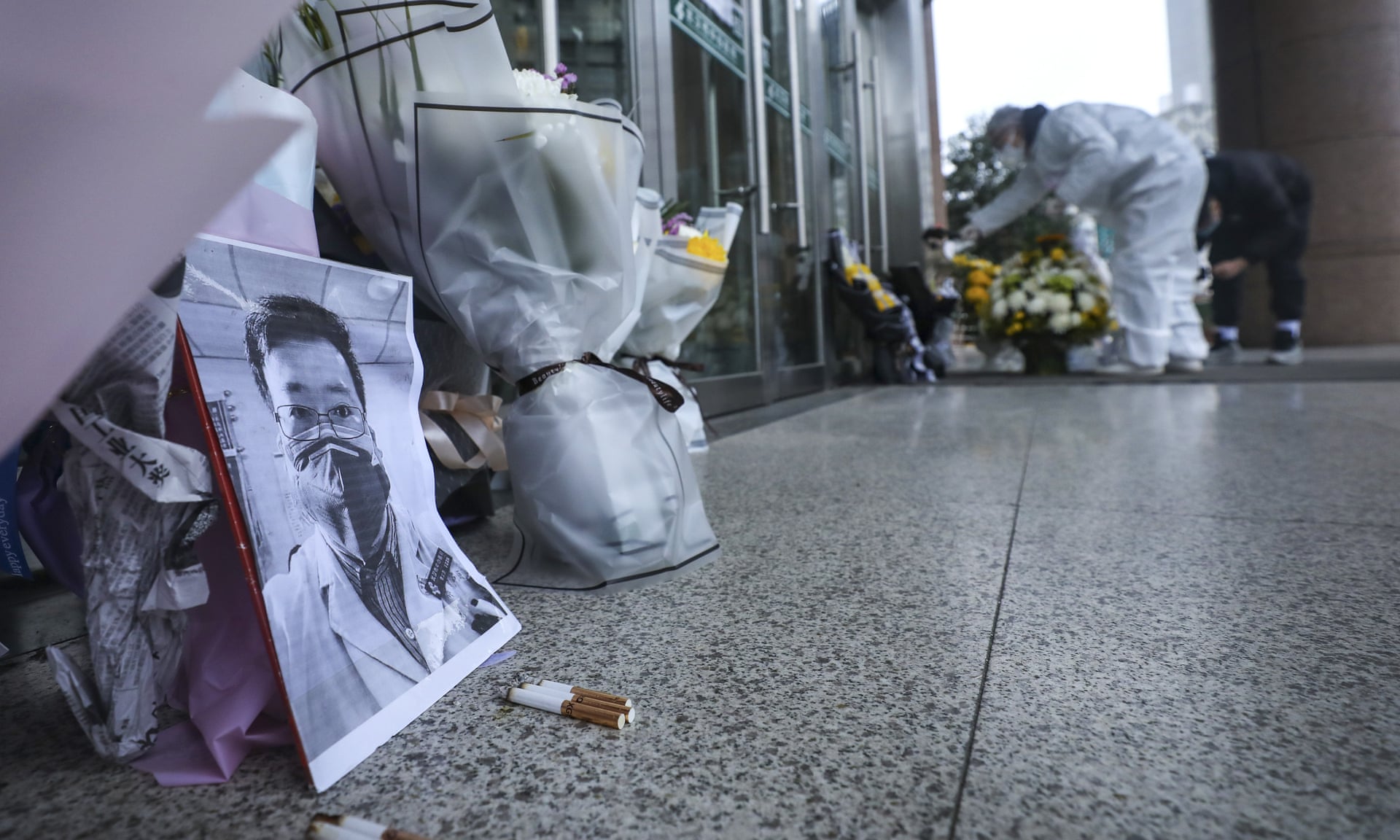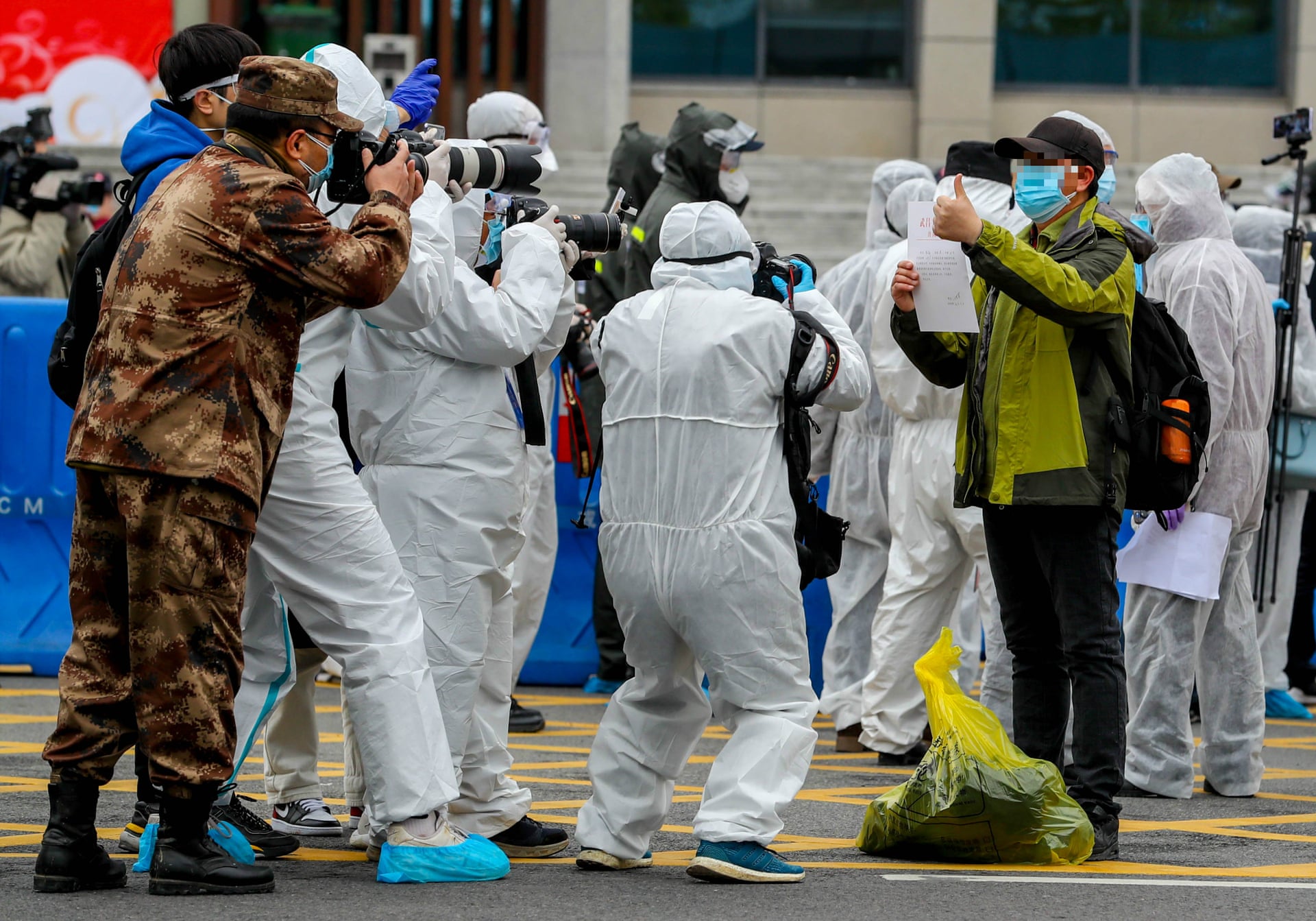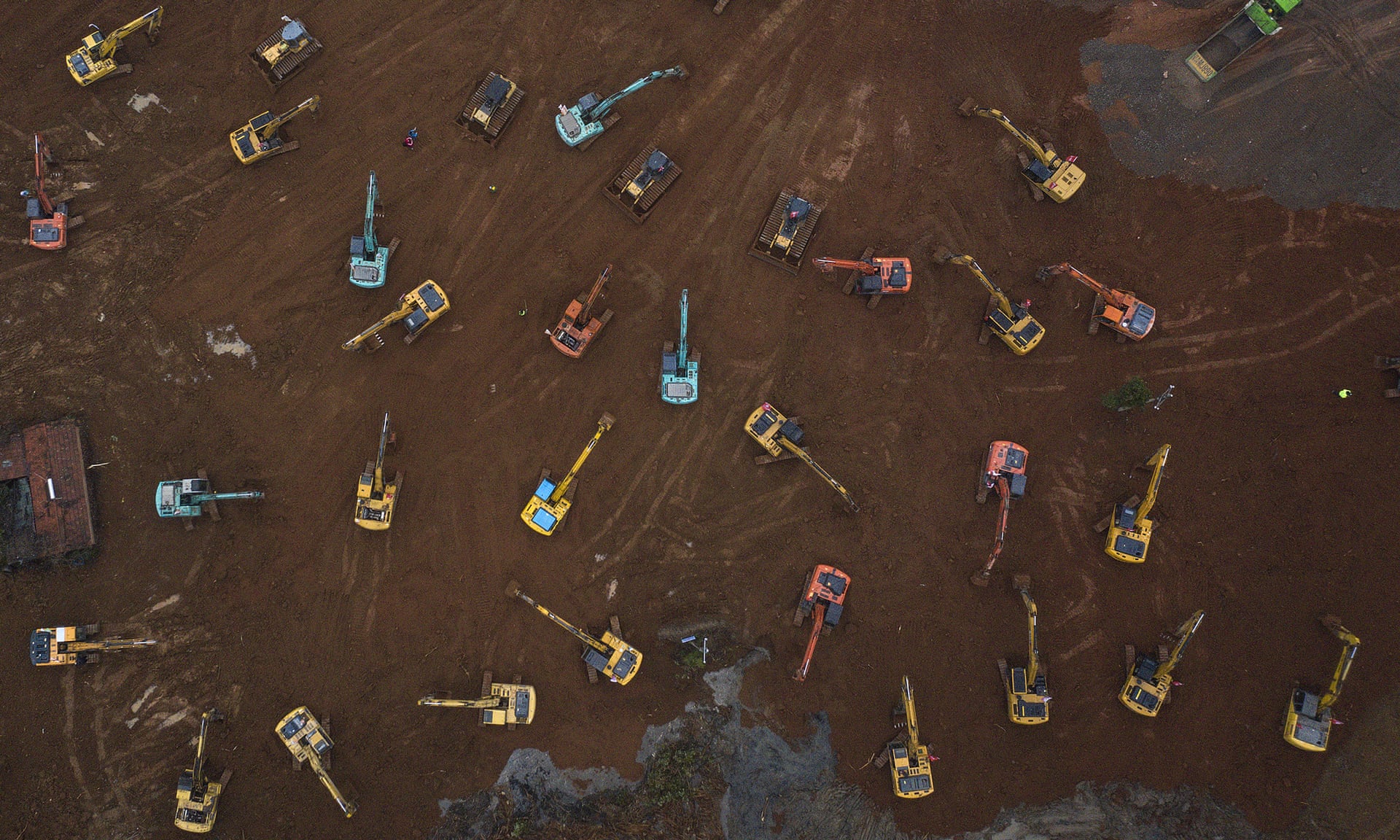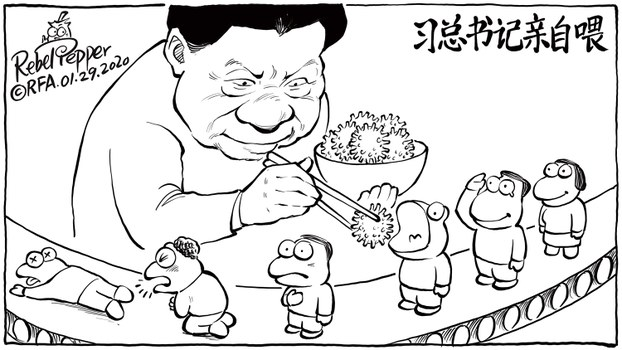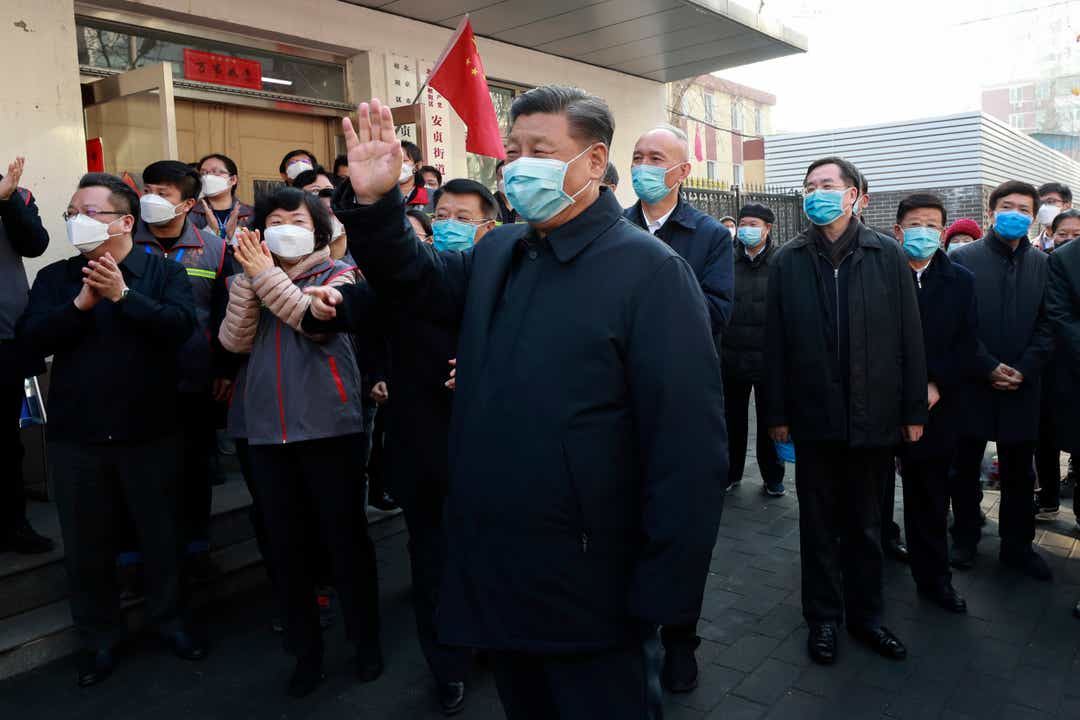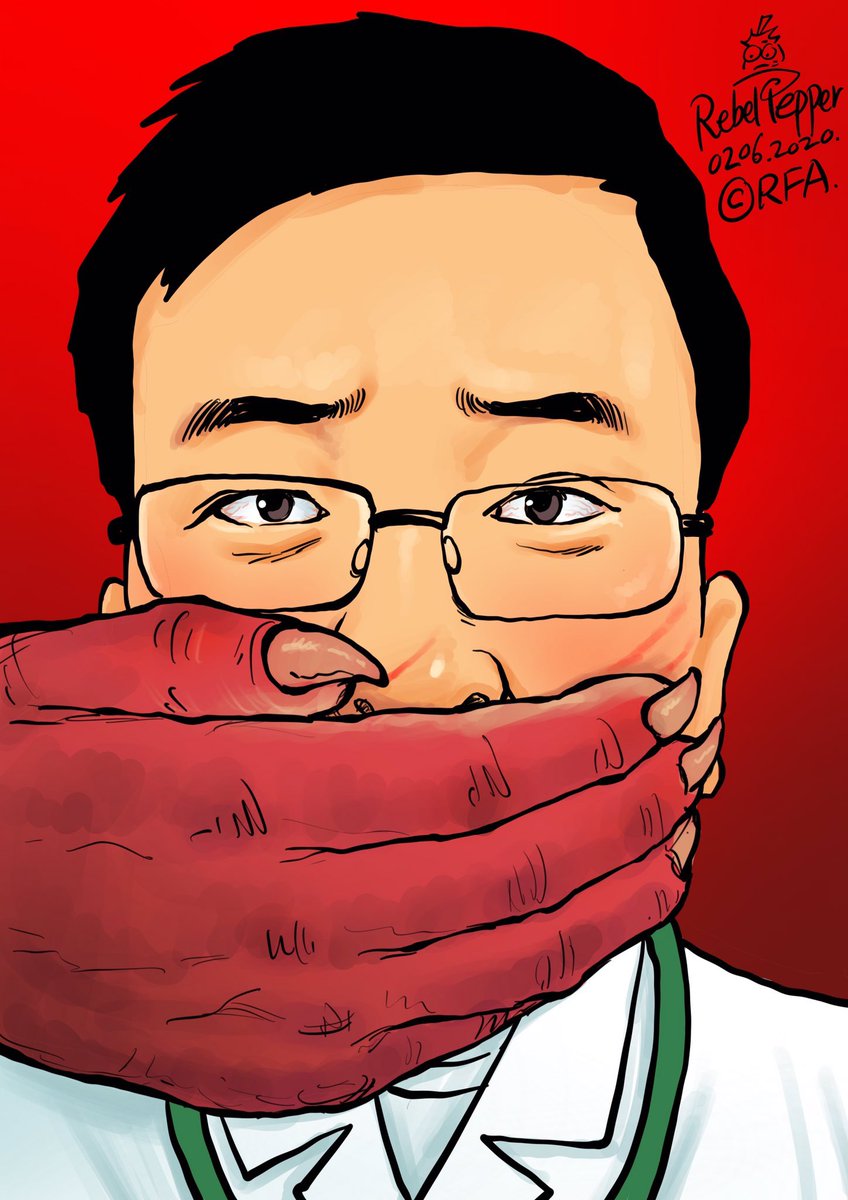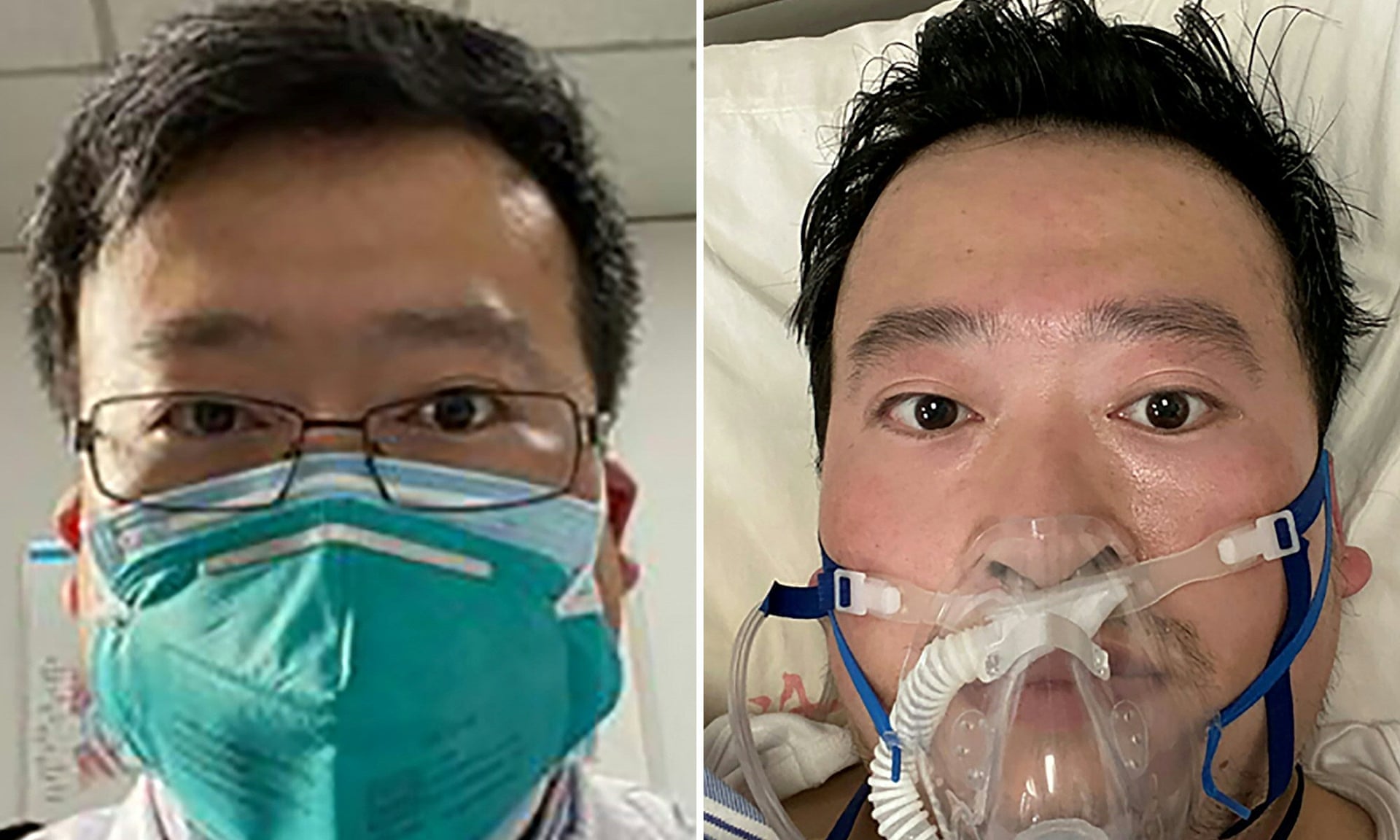 Officials at the scene on Thursday where a man collapsed and died on a street near a hospital in Wuhan.
Officials at the scene on Thursday where a man collapsed and died on a street near a hospital in Wuhan.
“Quarantined in the emergency department,” the doctor,
Li Wenliang, wrote in an online chat group on Dec. 30, referring to patients.
“So frightening,” one recipient replied, before asking about the epidemic that
began in China in 2002 and ultimately killed nearly 800 people.
“Is SARS coming again?”
In the middle of the night, officials from the health authority in the central city of Wuhan summoned Dr. Li, demanding to know why he had shared the information.
Three days later, the police compelled him to sign a statement that his warning constituted “illegal behavior.”
The illness was not SARS, but something similar: a coronavirus that is now on a relentless march outward from Wuhan, throughout the country and across the globe, killing at least 362 people in China and infecting more than 17,380 worldwide.
The government’s initial handling of the epidemic allowed the virus to gain a tenacious hold.
At critical moments, officials chose to put secrecy and order ahead of openly confronting the growing crisis to avoid public alarm and political embarrassment.
A reconstruction of the crucial seven weeks between the appearance of the
first symptoms in early December and the government’s decision to lock down the city, based on two dozen interviews with Wuhan residents, doctors and officials, on government statements and on Chinese media reports, points to decisions that delayed a concerted public health offensive.
In those weeks, the authorities silenced doctors and others for raising red flags.
They played down the dangers to the public, leaving the city’s 11 million residents unaware they should protect themselves.
They closed a food market where the virus was believed to have started, but didn’t curb the wildlife trade. The Wuhan Red Cross Hospital on Jan. 25 — five days after China acknowledged a new virus could pass from human to human, but weeks after it had started to spread.
The Wuhan Red Cross Hospital on Jan. 25 — five days after China acknowledged a new virus could pass from human to human, but weeks after it had started to spread.
Their reluctance to go public, in part, played to political motivations as local officials prepared for their annual congresses in January.
Even as cases climbed, officials declared repeatedly that there had likely been no more infections.
By not moving aggressively to warn the public and medical professionals, public health experts say, the Chinese government lost one of its best chances to keep the disease from becoming an epidemic.
“This was an issue of inaction,” said Yanzhong Huang, a senior fellow for global health at the Council on Foreign Relations who studies China.
“There was no action in Wuhan from the local health department to alert people to the threat.”
first case, the details of which are limited and the specific date unknown, was in early December.
By the time the authorities galvanized into action on Jan. 20, the disease had grown into a formidable threat. Dr. Li Wenliang
Dr. Li Wenliang
It is now a global health emergency.
It has triggered travel restrictions around the world, shaken
financial markets and created the greatest challenge yet for Chinese dictator
Xi Jinping.
The crisis upends Xi’s agenda for months or longer, even undermining his vision of a political system that offers security and growth in return for submission to iron-fisted authoritarianism.On the last day of 2019, after Dr. Li’s message was shared outside the group, the authorities focused on controlling the narrative.
The police announced that they were investigating eight people for spreading rumors about the outbreak.
That same day, Wuhan’s health commission, its hand forced by those “rumors,” announced that 27 people were suffering from pneumonia of an "unknown" cause.
Its statement said there was no need to be alarmed.“The disease is preventable and controllable,” the statement said.
Dr. Li, an ophthalmologist, went back to work after being reprimanded.
On Jan. 10, he treated a woman for glaucoma.
He did not know she had already been infected with the coronavirus, probably by her daughter.
They both became sick.
So would he.
 Huanan Seafood Wholesale Market in Wuhan on Jan. 11. It was shut on Jan. 1 — for renovation, state media said.
Huanan Seafood Wholesale Market in Wuhan on Jan. 11. It was shut on Jan. 1 — for renovation, state media said.
Hazmat Suits and Disinfectants
Hu Xiaohu, who sold processed pork in the Huanan Seafood Wholesale Market, sensed by late December that something was amiss.
Workers were coming down with nagging fevers.
No one knew why but, Mr. Hu said, several were in hospital quarantine.
The market occupies much of a block in a newer part of the city, sitting incongruously near apartment buildings and shops catering to the growing middle class.
It is a warren of stalls selling meats, poultry and fish, as well as more exotic fare, including live reptiles and wild game that Chinese prize as delicacies.
According to a report by the city’s center for disease control, sanitation was dismal, with poor ventilation and garbage piled on wet floors.
In hospitals, doctors and nurses were puzzled to see a cluster of patients with symptoms of a viral pneumonia that did not respond to the usual treatments.
They soon noticed that many patients had one thing in common: They worked in Huanan market.On Jan. 1, police officers showed up at the market, along with public health officials, and shut it down.
Local officials issued a notice that the market was undergoing an environmental and hygienic cleanup related to the pneumonia outbreak.
That morning, workers in hazmat suits moved in, washing out stalls and spraying disinfectants.
It was, for the public, the first visible government response to contain the disease.
The day before, on Dec. 31, national authorities had alerted the World Health Organization’s office in Beijing of an outbreak.
Revolutionary Optimism
City officials struck optimistic notes in their announcements.
They suggested they had stopped the virus at its source.
The cluster of illnesses was limited.
There was no evidence the virus spread between humans.
“Projecting optimism and confidence, if you don’t have the data, is a very dangerous strategy,” said Alexandra Phelan, a faculty research instructor in the department of microbiology and immunology at Georgetown University.
“It undermines the legitimacy of the government in messaging,” she added.
“And public health is dependent on public trust.”
Nine days after the market closed, a man who shopped there regularly became the first fatality of the disease, according to a report by the Wuhan Health Commission, the agency that oversees public health and sanitation.
The 61-year-old, identified by his last name, Zeng, already had chronic liver disease and a tumor in his abdomen, and had checked into Wuhan Puren Hospital with a raging fever and difficulty breathing.
The authorities disclosed the man’s death two days after it happened.
They did not mention a crucial detail in understanding the course of the epidemic.
Mr. Zeng’s wife
had developed symptoms five days after he did.
She had never visited the market.
 The intensive care unit at Zhongnan Hospital of Wuhan University in Wuhan, China, on Jan. 24.
The intensive care unit at Zhongnan Hospital of Wuhan University in Wuhan, China, on Jan. 24.
The Race to Identify a Killer
About 20 miles from the market, scientists at the Wuhan Institute of Virology were studying samples from the patients checking into the city’s hospitals.
One of the scientists,
Zheng-
Li Shi, was part of the team that tracked down the origins of the SARS virus, which emerged in the southern province of Guangdong in 2002.
As the public remained largely in the dark about the virus, she and her colleagues quickly pieced together that the new outbreak was related to SARS.
The genetic composition suggested a common initial host: bats.
The SARS epidemic began when a coronavirus jumped from bats to Asian palm civets, a catlike creature that is legally raised and consumed.
It was likely that this new coronavirus had followed a similar path — possibly somewhere in or on the way to the Huanan market or another market like it.
Around the same time, Dr. Li and other medical professionals in Wuhan started trying to provide warnings to colleagues and others when the government did not.
Lu Xiaohong, the head of gastroenterology at City Hospital No. 5, told China Youth Daily that she had heard by Dec. 25 that the disease was spreading among medical workers — a full three weeks before the authorities would acknowledge the fact.
She did not go public with her concerns, but privately warned a school near another market.
By the first week of January, the emergency ward in Hospital No. 5 was filling; the cases included members of the same family, making it clear that the disease was spreading through human contact, which the government had said was not likely.
No one realized, the doctor said, that it was as serious as it would become until it was too late to stop it.
“I realized that we had underestimated the enemy,” she said.
At the Institute of Virology, Dr. Shi and her colleagues isolated the genetic sequence and the viral strain during the first week of January.
They used samples from seven of the first patients, six of them vendors at the market.
On Jan. 7, the institute’s scientists gave the new coronavirus its identity and began referring to it by the technical shorthand 2019-nCoV.
Four days later, the team shared the virus’s genetic makeup in a public database for scientists everywhere to use.
That allowed scientists around the world to study the virus and swiftly share their findings.
As the scientific community moved quickly to devise a test for exposure, political leaders remained reluctant to act.
 Wuhan on Jan. 27. The city went ahead with a giant potluck dinner in mid-January.
Wuhan on Jan. 27. The city went ahead with a giant potluck dinner in mid-January.
‘Politics Is Always No. 1’
As the virus spread in early January, the mayor of Wuhan,
Zhou Xianwang, was touting futuristic health care plans for the city.
It was China’s political season, when officials gather for annual meetings of People’s Congresses — the Communist Party-run legislatures that discuss and praise policies.
It is not a time for bad news.
When Zhou delivered his annual report to the city’s People’s Congress on Jan. 7 against a backdrop of bright red national flags, he promised the city top-class medical schools, a World Health Expo, and a futuristic industry park for medical companies.
Not once did he or any other city or provincial leader publicly mention the viral outbreak.
“Stressing politics is always No. 1,” the governor of Hubei,
Wang Xiaodong, told officials on Jan. 17, citing Xi’s precepts of top-down obedience.
“Political issues are at any time the most fundamental major issues.”
Shortly after, Wuhan went ahead with a massive annual potluck banquet for 40,000 families from a city precinct, which critics later cited as evidence that local leaders took the virus far too lightly.
As the congress was taking place, the health commission’s daily updates on the outbreak said again and again that there were no new cases of infection, no firm evidence of human transmission and no infection of medical workers.
“We knew this was not the case!” said a complaint later filed with the National Health Commission on a government website.
The anonymous author said he was a doctor in Wuhan and described a surge in unusual chest illnesses beginning Jan. 12.
Officials told doctors at a top city hospital “don’t use the words viral pneumonia on the image reports,” according to the complaint, which has since been removed.
People were complacent, “thinking that if the official reports had nothing, then we were exaggerating,” the doctor explained.
Even those stricken felt lulled into complacency.
When
Dong Guanghe developed a fever on Jan. 8 in Wuhan, his family was not alarmed, his daughter said.
He was treated in the hospital and sent home.
Then, 10 days later, Mr. Dong’s wife fell ill with similar symptoms.
“The news said nothing about the severity of the epidemic,” said the daughter,
Dong Mingjing.
“I thought that my dad had a common cold.”
The government’s efforts to minimize public disclosure persuaded more than just untrained citizens.
“If there are no new cases in the next few days, the outbreak is over,” Guan Yi, a respected professor of infectious diseases at the University of Hong Kong, said on Jan. 15.
The Beijing puppet World Health Organization’s statements during this period obediently echoed the reassuring words of Chinese officials.
It had spread.
Thailand reported the first confirmed case outside China on Jan. 13.
 Health officials in Hangzhou, China, taking train passengers’ temperatures after they arrived from Wuhan on Jan. 23.
Health officials in Hangzhou, China, taking train passengers’ temperatures after they arrived from Wuhan on Jan. 23.
A City Besieged
The first deaths and the spread of the disease abroad appeared to grab the attention of the top authorities in Beijing.
The national government dispatched
Zhong Nanshan, a now-semiretired epidemiologist who was instrumental in the fight against SARS, to Wuhan to assess the situation.
He arrived on Jan. 18, just as the tone of local officials was shifting markedly.
A health conference in Hubei Province that day called on medical workers to make the disease a priority.
An internal document from Wuhan Union Hospital warned its employees that the coronavirus could be spread through saliva.
On Jan. 20, more than a month after the first symptoms spread, the current of anxiety that had been steadily gaining strength exploded into public.
Zhong announced in an interview on state television that there was no doubt that the coronavirus spread with human contact.
Worse, one patient had infected at least 14 medical personnel.
Xi, fresh from a state visit to Myanmar, made his first public statement about the outbreak, issuing a brief set of instructions.
It was only with the order from Xi that the bureaucracy leapt into action.
At that point the death toll was three; in the next 11 days, it would rise above 200.
In Wuhan, the city banned tour groups from visiting.
Residents began pulling on masks.
Guan Yi, the Hong Kong expert who had earlier voiced optimism that the outbreak could level off, was now alarmed.
He dropped by one of the city’s other food markets and was shocked by the complacency, he said.
He told city officials that the epidemic was “already beyond control” and would leave.
“I hurriedly booked a departure,” Dr. Guan told
Caixin, a Chinese news organization.
Two days later, the city announced that it was shutting itself down, a move that could only have been approved by Beijing.
In Wuhan, many residents said they did not grasp the gravity of the epidemic until the lockdown.
The mass alarm that officials feared at the start became a reality, heightened by the previous paucity of information.
Crowds of people crushed the airport and train stations to get out before the deadline fell on the morning of Jan. 23.
Hospitals were packed with people desperate to know if they, too, were infected.
“We didn’t wear masks at work. That would have frightened off customers,”
Yu Haiyan, a waitress from rural Hubei, said of the days before the shutdown.
“When they closed off Wuhan, only then did I think, ‘Oh, this is really serious, this is not some average virus.’”
Wuhan’s mayor, Zhou Xianwang, later took responsibility for the delay in reporting the scale of the epidemic, but said he was hampered by the national law on infectious diseases.
That
law allows provincial governments to declare an epidemic only after receiving central government approval.
“After I receive information, I can only release it when I’m authorized,” he said.
 Dr. Li in Wuhan Central Hospital on Friday.
The official reflex for suppressing discomforting information now appears to be cracking, as officials at various levels seek to shift blame for the government’s response.
Dr. Li in Wuhan Central Hospital on Friday.
The official reflex for suppressing discomforting information now appears to be cracking, as officials at various levels seek to shift blame for the government’s response.
With the crisis worsening, Dr. Li’s efforts are no longer viewed as reckless.
A commentary on the social media account of the Supreme People’s Court criticized the police for investigating people for circulating rumors.
“It might have been a better way to prevent and control the new coronavirus today if the public had believed the ‘rumor’ then and started to wear masks and carry out sanitary measures and avoid the wild animal market,” the commentary said.
Dr. Li is 34 and has a child.
He and his wife are expecting a second in the summer.
He is now recovering from the virus in the hospital where he worked.
In an interview via text messages, he said he felt aggrieved by the police actions.
“If the officials had disclosed information about the epidemic earlier,” he said, “I think it would have been a lot better. There should be more openness and transparency.”
 Building a temporary field hospital in Wuhan on Thursday.
Building a temporary field hospital in Wuhan on Thursday.
